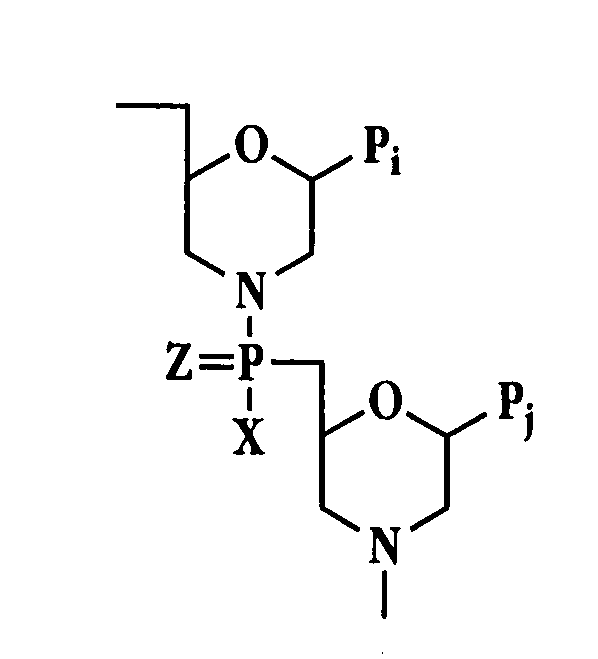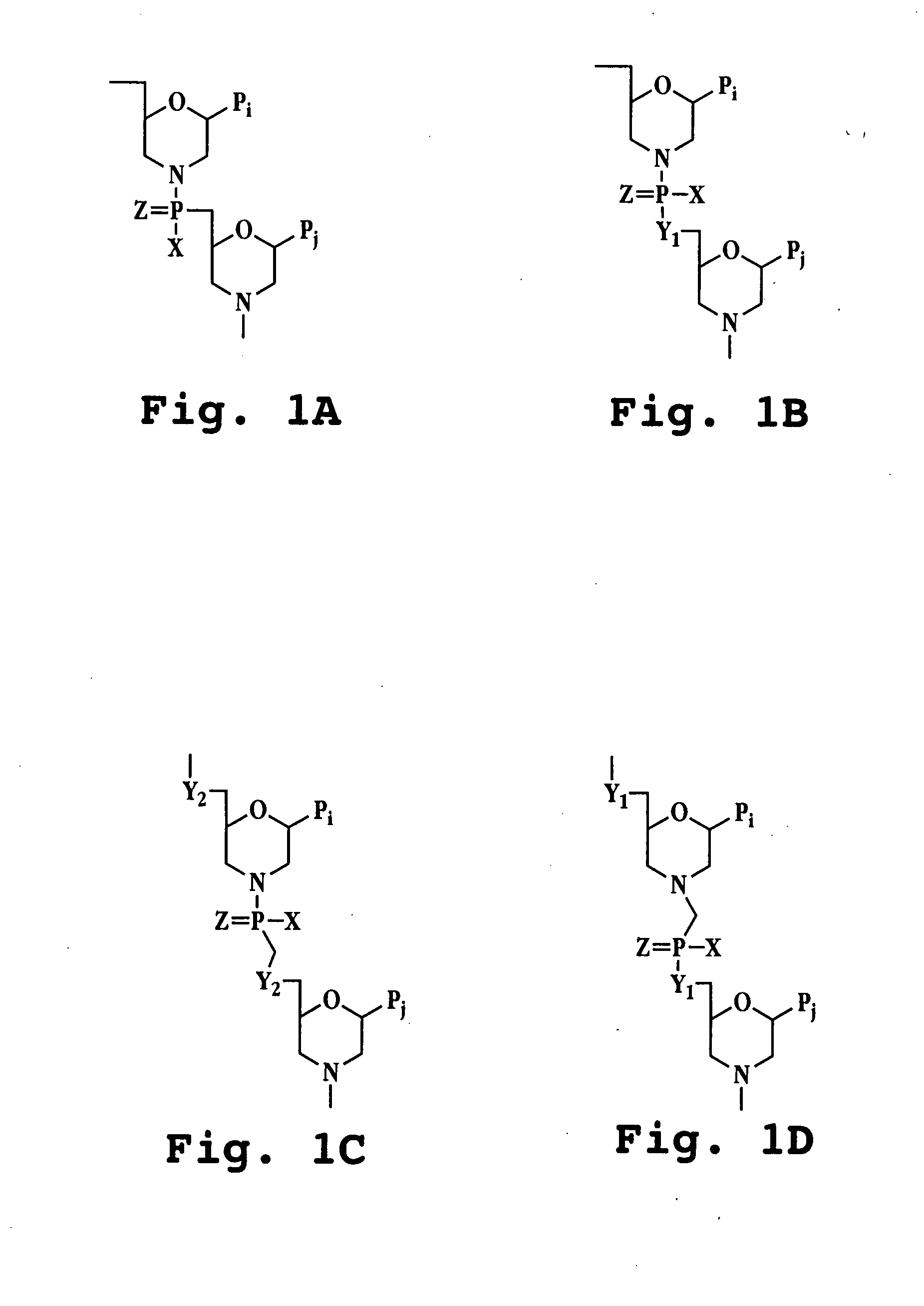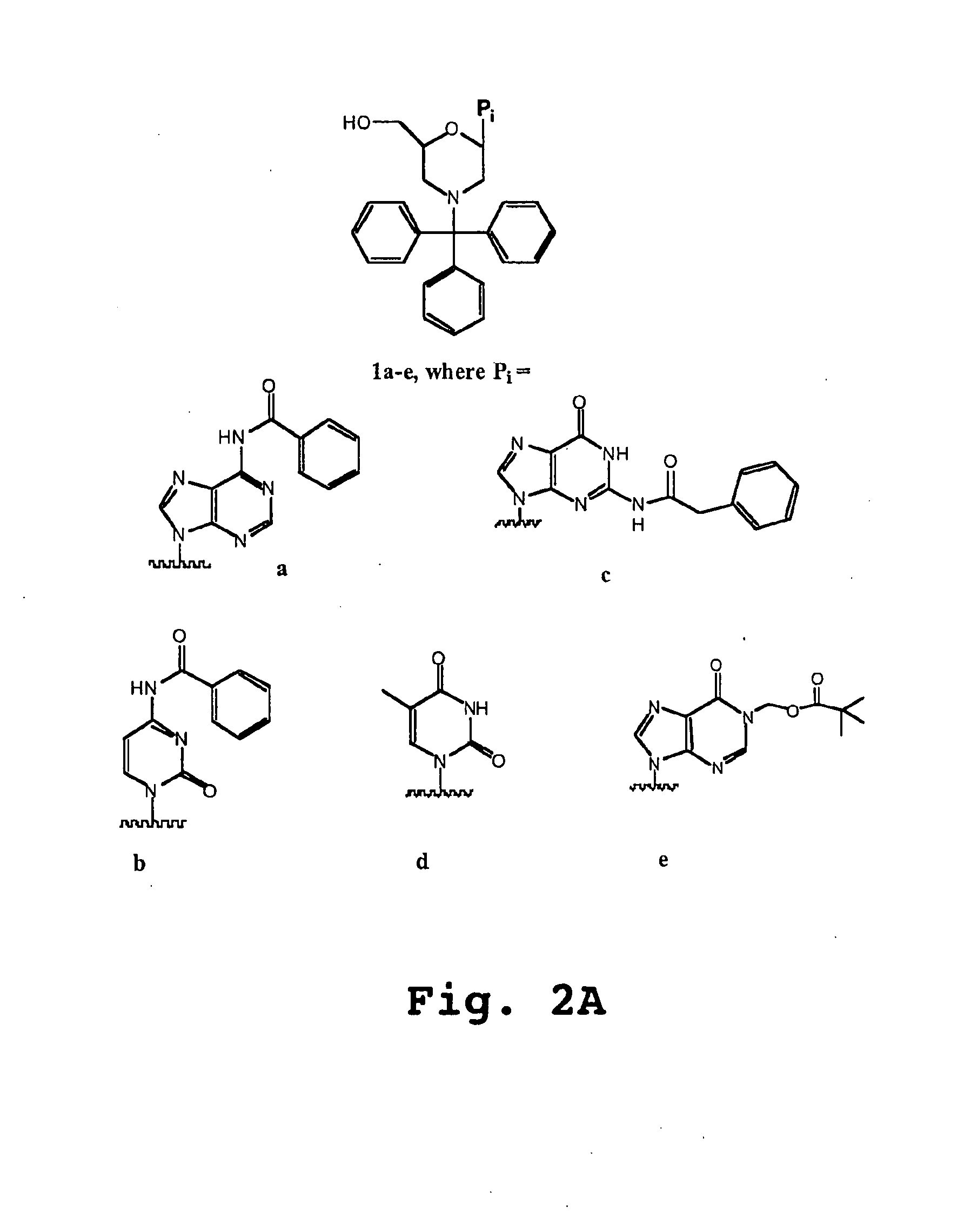Antibacterial antisense oligonucleotide and method
a technology of antibacterial and antibacterial oligonucleotide, which is applied in the field of peptide-conjugated morpholino oligonucleotide compounds, can solve the problems of limited commercialization and lack of current research efforts to find new types of antibiotics, and achieve the effects of enhancing the antibacterial activity of an uncharged oligonucleotide, enhancing activity, and enhancing activity
- Summary
- Abstract
- Description
- Claims
- Application Information
AI Technical Summary
Benefits of technology
Problems solved by technology
Method used
Image
Examples
example 1
Morpholino Subunits
See FIG. 2B
[0281]General Preparation of morpholino salts 3a-d,f: To a cooled mixture of methanol (5-10 mL / g ribonucleosides 2) was added a warm aqueous solution of sodium meta-periodate (1.05 eq). At this stage, the composition of the reaction mixture will be from 1540% water / methanol (v:v). To this mixture was added, in portions, solid 1a-d,f. Upon reaction completion (1-2 hr), the by-product sodium iodate cake was removed by filtration and reslurried with water / methanol to recover any product intermediate. To the pooled filtrates were added ammonium biborate (14-2.0 eq). After stirring at 20° C. for 45-120 min, the mixture was cooled, and borane-triethylamine (1.5-2.0 eq) was added. This mixture was adjusted to pH 3.5-4.0 with a methanolic solution of either p-toluenesulfonic acid [3b, c, d, f] or hydrochloric acid [3a] (4-5 eq). The mixture was held at pH 3.5-4.0 for 7-14 hr at <10° C. The p-toluenesulfonic acid salts of 3b, c, d, f were isolated by filtration ...
example 2
Morpholino Subunits with Linkage Type (a)
See FIG. 2C
[0285]General Preparation of 5a-e: Compound 1a-e was dissolved in dichloromethane (6 mL / g 1) and cooled to <5 C. To this solution were added 2,6-lutidine (1.6 eq), N-methylimidazole (0.3 eq), and N,N-dimethylphosphoramidodichloridate 4 (1.6 eq). Upon reaction completion (6-12 hr), this mixture was washed with a pH 3 citrate buffer. The crude product was isolated by precipitation into heptane. The final product was purified by silica gel chromatography (gradient of ethyl acetate / heptane). The pooled fractions containing product were combined, evaporated to a smaller volume, and isolated by precipitation from heptane. Yields=40-60%. During the chromatography of subunit 5e, as well as other subunits derived from this heterocyclic base, following ethyl acetate / heptane elution of the non-polar impurities, a gradient of (5% isopropanol / ethyl acetate) in dichloromethane was used to elute the product.
example 3
Morpholino Subunits with Pro-Cationic Linkages Type (b1)
See FIG. 2D
[0286]Preparation of N-trityl piperazine, succinate salt (11): To a cooled solution of piperazine (10 eq) in toluene / methanol (5:1 toluene / methanol (v:v); 5 mL / g piperazine) was added slowly a solution of trityl chloride 10 (1.0 eq) in toluene (5 mL / g trityl chloride). Upon reaction completion (1-2 hr), this solution was washed four times with water. To the resulting organic solution was added an aqueous solution of succinic acid (1.1 eq; 13 mL water / g succinic acid). This mixture was stirred for 90 min, and the solid product was collected by filtration. The crude solid was purified by two reslurries in acetone. Yield=70%.
[0287]Preparation of 1-trifluoroacetyl-4-trityl piperazine (14): To a slurry of 3.0 kg 11 in 18 L methanol (6 mL / g 11) was added 3.51 L diisopropylethylamine (3.0 eq) and 1.038 L ethyl trifluoroacetate 13a (1.3 eq). After overnight stirring, the organic mixture was distilled to dryness. The resultin...
PUM
| Property | Measurement | Unit |
|---|---|---|
| Fraction | aaaaa | aaaaa |
| Fraction | aaaaa | aaaaa |
| Time | aaaaa | aaaaa |
Abstract
Description
Claims
Application Information
 Login to View More
Login to View More - R&D
- Intellectual Property
- Life Sciences
- Materials
- Tech Scout
- Unparalleled Data Quality
- Higher Quality Content
- 60% Fewer Hallucinations
Browse by: Latest US Patents, China's latest patents, Technical Efficacy Thesaurus, Application Domain, Technology Topic, Popular Technical Reports.
© 2025 PatSnap. All rights reserved.Legal|Privacy policy|Modern Slavery Act Transparency Statement|Sitemap|About US| Contact US: help@patsnap.com



